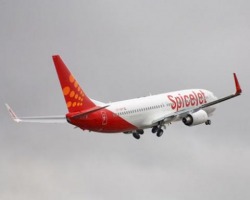
Major improvements have been made in aviation sector: Patel. Mangalore: The Union Minister of State for Civil Aviation, Mr Praful Patel, has said that the country will be in the top-five civil aviation markets in the world in the next five years.
Inaugurating the new integrated terminal building of Mangalore airport here on Saturday, he said that the country’s civil aviation sector was not recognised in the world until a few years ago. Today, India is the ninth largest civil aviation market in the world.
“Within the next five years, India will be in the top-five civil aviation markets all across the world. That, I think, is a great achievement in the remarkably short period of time,” he said. Stating that substantial improvements have been made in the civil aviation sector in the country, he said today flying is no more a luxury for the common man.
Mr Patel said that country’s infrastructure is undergoing a sea change under the leadership of the Prime Minister, Dr Manmohan Singh.
For the first time there is a Cabinet Committee on Infrastructure headed by the Prime Minister. That is why projects were being monitored and implemented on time, he said.
Runway extension
Later in an informal chat with presspersons, Mr Patel said that the runway of Mangalore airport will be extended by another 1,000 ft, from the existing 8,000 ft.
Asked when the airport will get international status, he said that one of the requirements for declaring Mangalore as an international airport is the 9,000 ft runway. That is why it has been decided to extend the runway by another 1,000 ft. The work for this will be awarded soon, he said.
The extension of runway is essential for handling larger aircraft to international destinations in West Asia and beyond that. The extension will help bring larger cargo aircraft for import and export out of Mangalore, he said.The Union Government will take a decision on declaring Mangalore as an international airport at the earliest, he added.
Source: The Hindu Business Line
Inaugurating the new integrated terminal building of Mangalore airport here on Saturday, he said that the country’s civil aviation sector was not recognised in the world until a few years ago. Today, India is the ninth largest civil aviation market in the world.
“Within the next five years, India will be in the top-five civil aviation markets all across the world. That, I think, is a great achievement in the remarkably short period of time,” he said. Stating that substantial improvements have been made in the civil aviation sector in the country, he said today flying is no more a luxury for the common man.
Mr Patel said that country’s infrastructure is undergoing a sea change under the leadership of the Prime Minister, Dr Manmohan Singh.
For the first time there is a Cabinet Committee on Infrastructure headed by the Prime Minister. That is why projects were being monitored and implemented on time, he said.
Runway extension
Later in an informal chat with presspersons, Mr Patel said that the runway of Mangalore airport will be extended by another 1,000 ft, from the existing 8,000 ft.
Asked when the airport will get international status, he said that one of the requirements for declaring Mangalore as an international airport is the 9,000 ft runway. That is why it has been decided to extend the runway by another 1,000 ft. The work for this will be awarded soon, he said.
The extension of runway is essential for handling larger aircraft to international destinations in West Asia and beyond that. The extension will help bring larger cargo aircraft for import and export out of Mangalore, he said.The Union Government will take a decision on declaring Mangalore as an international airport at the earliest, he added.
Source: The Hindu Business Line


 RSS Feed
RSS Feed